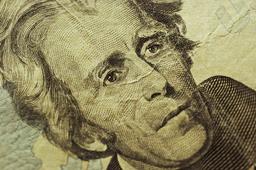
Jackson and Growth of Reform
Quiz by A. Croft
Feel free to use or edit a copy
includes Teacher and Student dashboards
Measure skillsfrom any curriculum
Measure skills
from any curriculum
Tag the questions with any skills you have. Your dashboard will track each student's mastery of each skill.
With a free account, teachers can
- edit the questions
- save a copy for later
- start a class game
- automatically assign follow-up activities based on students’ scores
- assign as homework
- share a link with colleagues
- print as a bubble sheet
10 questions
Show answers
- Q1In what ways did Native Americans resist the Indian Removal Act?Used the telegraph system to contact other tribes and tried to bribe Congressmen to overturn the Act.Fought against relocation, gave in to the move, and used the courts for help.Moved closer to Canada, contacted the British for help, and used the train system.30s
- Q2After the Supreme Court ruled, Jackson said, “John Marshall has made his decision …Now let him enforce it.” He meant:Jackson was upset that Marshall had made the Court’s decision to free slaves.It was not the President’s job to enforce the rulings of the Court since he made the law.Jackson did not intend to enforce the Court’s ruling because he didn't agree.20s
- Q3The ____________ Tribe was forced to move to the Indian Territory in a devastating path of death and sadness. Their journey became known as the ___________________.Cherokee; Trail of TearsSioux: Westward RemovalShoshone: Path of Pity20s
- Q4How did Andrew Jackson end the power of the Bank of the United States?He vetoed the recharter of the Bank and had money divided up and deposited into state banks.He passed legislation to ban any person or state from contributing to the Bank.He chose Nicholas Biddle to become president of the Bank knowing that Biddle would fail terribly.20s
- Q5What were the Northern and Southern positions on the issue of tariffs?Northern states wanted tariffs so people would buy their goods; Southern states did not want tariffs because they damaged Southern economies.Northern states did not want tariffs because they damaged Northern economies; Southern states wanted tariffs so people would buy their goods.Both Northern and Southern states wanted tariffs but the North wanted extra taxes on cotton and the South wanted extra taxes on fish or timber.20s
- Q6Why did South Carolina threaten secession and how was the Crisis solved?They wanted to join the United States to become the 39th State, but Jackson forced them to be independent for ten more years.They were angry over the "Tariff of Abominations", but Henry Clay's compromise in 1833 solved the Nullification Crisis.They wanted to form a larger state called "Franklin" with new lands but Jefferson's tax code of 1835 denied the expansion.20s
- Q7Andrew Jackson supported ALL of the following EXCEPTAmerican Indian removal to lands in Indian Territoryending the National Bankgiving slaves equal rightskeeping the U.S. together by speaking against Southern nullification20s
- Q8Which famous document was utilized in making the "Declaration of Sentiments" at the Seneca Falls Convention?Articles of ConfederationDeclaration of IndependenceThe Constitution20s
- Q9People for Abolition and Women's Suffrage often worked together in reform to achieve their rights. What changes were people like Frederick Douglass, Harriet Tubman, Sojourner Truth, and Elizabeth Cady Stanton trying to achieve?They were trying to unite the states (abolition) and gain more strength in government (suffrage).They were trying to end slavery (abolition) and gain the woman's right to vote (suffrage).They were trying to stop the sale of alcohol (abolition) and gain more land for factories (suffrage).20s
- Q10Which are examples of REFORMS people were trying to make in America in the 1800s?help for the mentally ill, education, voting rights for women, ending slaverylonger rivers through the country, electricity in Southern homes, politics, working conditionsbetter home conditions, fewer religious options, education for slaves, chemistry20s